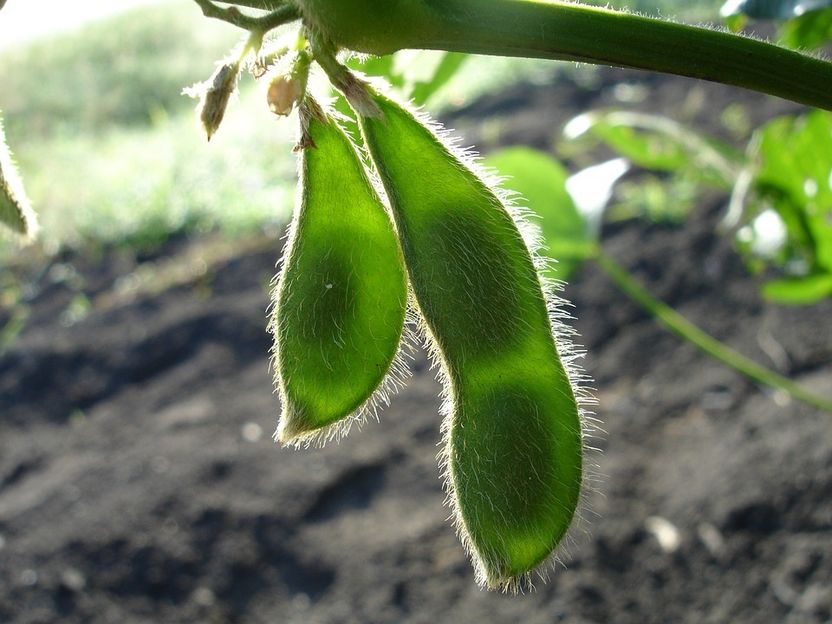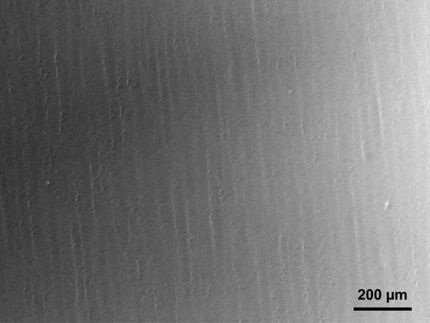Graphene from soybeans
A breakthrough by CSIRO-led scientists has made the world's strongest material more commercially viable, thanks to the humble soybean. graphene is a carbon material that is one atom thick. Its thin composition and high conductivity means it is used in applications ranging from miniaturised electronics to biomedical devices. These properties also enable thinner wire connections; providing extensive benefits for computers, solar panels, batteries, sensors and other devices.

jcesar2015; pixabay.com; CC0
Until now, the high cost of graphene production has been the major roadblock in its commercialisation. Previously, graphene was grown in a highly-controlled environment with explosive compressed gases, requiring long hours of operation at high temperatures and extensive vacuum processing. CSIRO scientists have developed a novel "GraphAir" technology which eliminates the need for such a highly-controlled environment.
The technology grows graphene film in ambient air with a natural precursor, making its production faster and simpler. "This ambient-air process for graphene fabrication is fast, simple, safe, potentially scalable, and integration-friendly," CSIRO scientist Dr Zhao Jun Han said.
"Our unique technology is expected to reduce the cost of graphene production and improve the uptake in new applications." GraphAir transforms soybean oil - a renewable, natural material - into graphene films in a single step. "Our GraphAir technology results in good and transformable graphene properties, comparable to graphene made by conventional methods," CSIRO scientist and co-author of the study Dr Dong Han Seo said.
With heat, soybean oil breaks down into a range of carbon building units that are essential for the synthesis of graphene. The team also transformed other types of renewable and even waste oil, such as those leftover from barbecues or cooking, into graphene films.
"We can now recycle waste oils that would have otherwise been discarded and transform them into something useful," Dr Seo said. The potential applications of graphene include water filtration and purification, renewable energy, sensors, personalised healthcare and medicine, to name a few. Graphene has excellent electronic, mechanical, thermal and optical properties as well. Its uses range from improving battery performance in energy devices, to cheaper solar panels.
Original publication
Dong Han Seo, Shafique Pineda, Jinghua Fang, Yesim Gozukara, Samuel Yick, Avi Bendavid, Simon Kwai Hung Lam, Adrian T. Murdock, Anthony B. Murphy, Zhao Jun Han & Kostya (Ken) Ostrikov; "Single-step ambient-air synthesis of graphene from renewable precursors as electrochemical genosensor"; Nature Comm.; 2017
Original publication
Dong Han Seo, Shafique Pineda, Jinghua Fang, Yesim Gozukara, Samuel Yick, Avi Bendavid, Simon Kwai Hung Lam, Adrian T. Murdock, Anthony B. Murphy, Zhao Jun Han & Kostya (Ken) Ostrikov; "Single-step ambient-air synthesis of graphene from renewable precursors as electrochemical genosensor"; Nature Comm.; 2017
Organizations
Other news from the department science

Get the chemical industry in your inbox
By submitting this form you agree that LUMITOS AG will send you the newsletter(s) selected above by email. Your data will not be passed on to third parties. Your data will be stored and processed in accordance with our data protection regulations. LUMITOS may contact you by email for the purpose of advertising or market and opinion surveys. You can revoke your consent at any time without giving reasons to LUMITOS AG, Ernst-Augustin-Str. 2, 12489 Berlin, Germany or by e-mail at revoke@lumitos.com with effect for the future. In addition, each email contains a link to unsubscribe from the corresponding newsletter.


























































